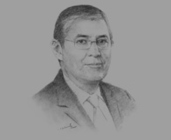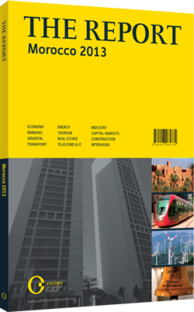OBG talks to Mohamed El Kettani, CEO, Attijariwafa Bank

Interview: Mohamed El Kettani
In what ways are developments in the banking sector helping to facilitate economic growth?
MOHAMED EL KETTANI: Growth in 2012 is set to be approximately 3%, which is an acceptable rate given the economic context. In 2013 growth in loans is expected to be higher than 4.5%. The increase of financing to small and medium-sized enterprises (SMEs) has lately been higher than that of deposits, demonstrating efforts by banks to support the growth of the real economy. In fact, by the end of 2007, the loan-to-deposit ratio was 66%, and by the end of June 2012 it was 108%.
However, Morocco also finds itself at a crossroads, as it needs to diversify its financing sources and deepen its capital markets in order to keep up with the pace of development. Today, Morocco’s banking sector has sufficient liquidity, and the central bank provides refinancing if needed beyond the interbank markets.
At the same time, companies need to explore additional sources of financing, such as venture capital or bond insurance. This will require continuing reforms at the Casablanca stock exchange, where products such as negotiable debt securities are already traded, and where a futures market is currently being created. This has carried the banking sector to a new level of maturity, balancing the traditional efforts to increase the banking penetration rate and deposits with more innovative ways of generating liquidity.
What obstacles do Moroccan banks face when considering expansion in Africa?
EL KETTANI: For a bank to be able to expand abroad, it must be strongly established in its home market. After South Africa, Morocco’s banking sector is the strongest and best developed on the continent. Moroccan banks have already implemented Basel I and II and are in the process of implementing Basel III regulation. The African market is a logical focus for Moroccan banks, as we share several commonalities with regional banks, including similar social and economic challenges. Implementing the Moroccan banking model in the social and economic contexts of these countries could lead to the creation of a profitable universal banking model. Once the decision has been made to acquire a bank elsewhere in Africa, the real work begins: adapting the management model, improving information systems and implementing a development strategy. The banking penetration rate must also be improved. In Morocco, this is around 52%; in sub-Saharan countries, it is between 5% and 8%. When investing abroad, Moroccan banks do not come as conquerors, but as banks with a plan to develop banks acquired. We focus more on growing the middle class and SMEs than on multinationals, but we also offer support to investors from developed countries, because we can help them decide where and how to commit their capital in Africa.
How will the introduction of Islamic finance affect conventional banking operations?
EL KETTANI: Islamic financing was introduced in Morocco years ago for products related to housing, tourism and SMEs. However, we lacked sharia-compliant savings instruments that would help support financing. Today there is a need to put sharia-compliant products on the same tax footing as conventional ones so that Islamic finance products have an added value, and so that the market for such products is sustained, even if it will not revolutionise the current banking sector.
What is the significance of the liberalisation of exchange controls that has been taking place?
EL KETTANI: Morocco’s currency exchange regime has been opening over the last 30 years. Today most commercial and investment transactions are entirely liberalised. What remains is the complete convertibility of the Dirham. Currently, there is pressure on the exchange reserves, so all that weighs on this balance must be reinforced, especially exports. Moroccan companies need to improve productivity and competitiveness, and export offerings must be diversified. For this reason, a freely convertible currency is both necessary and important.
You have reached the limit of premium articles you can view for free.
Choose from the options below to purchase print or digital editions of our Reports. You can also purchase a website subscription giving you unlimited access to all of our Reports online for 12 months.
If you have already purchased this Report or have a website subscription, please login to continue.

